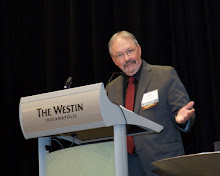As I noted in an earlier blog, a company’s customer service department should be its “canary in the coal mine”, giving early warnings of problems so management can act. This type of communication is always a two-way street. Companies must give their customer service people a big megaphone and an important platform to spread the word. It also has an obligation to listen.
Adding credence to those observations, here are a couple of examples that help illustrate the point.
The first comes from a very recent article in the Wall Street Journal. That story questioned why Toyota waited nearly 6 months to introduce a fix for its acceleration problems in the U.S. after it had announced a similar fix for its cars in Europe. The Journal’s report is based on comments made during the course of a February 5th news conference with Toyota's quality chief, Shinichi Sasaki, and CEO, Akio Toyoda.
During the course of that news conference, the Journal notes:
“Answering the question of why Toyota didn't move sooner the fix for the pedals in the U.S., Mr. Sasaki also referred to "coordination" between engineers and people collecting consumer feedback on products as a possible factor that stretched out the time needed for a response. He didn't elaborate further.”The Los Angeles Times noted that one of industry’s internationally recognized software engineers, Steve Wozniak, co-founder of Apple, apparently didn’t have either a megaphone or a platform of sufficient size to grab attention. The Times reports that “Woz”, owner of a 2010 Prius, experienced acceleration problems – up to 97 m.p.h. -- when he attempted to use his cruise control to increase the car’s speed.
The Times article goes on to report:
“Wozniak, 59, wanted to alert Toyota Motor Corp. and the National Highway Traffic Safety Administration to the possible safety issue, but he grew frustrated when no one would listen.”
Love is a term that’s regularly been associated with the Toyota brand. Owners “love” their cars, and the company that makes them. The company professes to treat its customers “lovingly”.
However, as theologian and philosopher Paul Tillich once noted,
“The first duty of love is to listen.”





